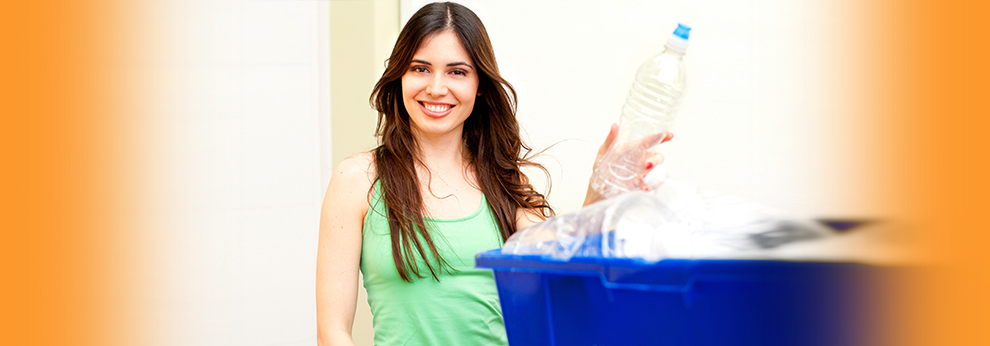Comprehensive Cardboard and Packaging Disposal Techniques
Posted on 08/10/2025
Efficient management of cardboard and packaging waste has become critical in today's environmentally conscious world. As e-commerce, retail, and industrial operations continue to boom, the volume of packaging materials disposed of by businesses and households alike has increased considerably. This article explores comprehensive cardboard and packaging disposal techniques that not only help reduce environmental impact but also promote circular economy practices.
Understanding Cardboard and Packaging Waste
Cardboard is widely used due to its durability, versatility, and low cost. Packaging waste, on the other hand, encompasses a wider range of materials, including plastic, paper, foam, and metals in addition to cardboard. These materials, if not disposed of properly, contribute to landfill overflow, resource depletion, and pollution problems. Therefore, mastering effective cardboard and packaging disposal practices is essential.
Types of Cardboard and Packaging Materials
- Corrugated cardboard: Commonly used for shipping boxes, made from three layers for strength.
- Paperboard: Thinner than corrugated cardboard, used for cereal boxes and similar packaging.
- Kraft paper: Strong, unbleached paper used for envelopes and wrapping.
- Plastic packaging: Includes bubble wrap, shrink wrap, polystyrene foam, and plastic films.
- Composite packaging: Items made from multiple materials, such as beverage cartons (Tetra Pak), which combine paperboard, plastic, and aluminium.
Properly categorizing and segregating these materials is the first step towards swift and efficient disposal.

The Importance of Proper Cardboard and Packaging Waste Disposal
Improper disposal leads to a host of environmental problems:
- Landfill space depletion due to non-compostable packaging materials.
- Greenhouse gas emissions during decomposition of cardboard in oxygen-deprived landfill environments.
- Resource wastage by not recycling materials that can be returned to the production cycle.
- Wildlife hazards and pollution related to poorly managed packaging waste.
Therefore, comprehensive cardboard and packaging recycling techniques are crucial for environmental sustainability, compliance with local regulations, and corporate social responsibility initiatives.
Best Practices for Cardboard and Packaging Disposal
1. Reduce Packaging Waste at the Source
- Choose suppliers who use minimal or recyclable packaging.
- Encourage the use of bulk packaging to reduce the total volume of materials.
- Invest in reusable shipping containers and materials where feasible.
- Train employees and family members to reduce, reuse, and recycle packaging materials conscientiously.
2. Proper Sorting and Segregation
Segregating your waste is essential for efficient recycling and disposal. Implement clearly marked bins for:
- Cardboard only (flatten boxes and remove contaminants such as packing tape or food residue).
- Clean paper packaging (paper bags, wrappers, and shredded paper).
- Plastic packaging (bubble wrap, cling film, and plastic mailers).
- Mixed or composite packaging (e.g., Tetra Pak cartons).
Employing this sorting system increases recycling efficiency and ensures compliant cardboard and packaging disposal.
3. Cardboard Recycling Methods
Residential Cardboard Recycling
- Break down boxes: Flatten all cardboard boxes to maximize space in recycling bins.
- Remove contaminants: Separate any food residue, tape, or non-paper inserts.
- Dry storage: Store cardboard in a dry place to prevent mold and contamination.
- Check local recycling guidelines: Some centers require bundling or have specific pickup schedules.
Commercial Cardboard Recycling
- Compactors and balers: Invest in machinery to compress cardboard into manageable bales, reducing pickup frequency and storage needs.
- Scheduled pickups: Arrange for regular recycling pickups from waste management companies.
- Partnerships: Establish agreements with local recyclers for bulk cardboard waste.
- Employee training: Educate staff to ensure all cardboard is prepared and sorted correctly.
4. Commercial Packaging Waste Disposal Services
Many businesses generate large amounts of cardboard and packaging. Third-party providers offer tailored services, including:
- Bulk removal of cardboard and mixed recyclable packaging.
- Shredding or secure disposal for packaging containing confidential information.
- Specialty recycling for composite packaging materials.
- Documentation and reporting for compliance and sustainability tracking.
5. Composting Compostable Packaging
- Some cardboards and packaging papers are biodegradable and can be added to home compost bins.
- Ensure the packaging is uncoated and free from inks, waxes, or plastic linings.
- Shred or tear paper and cardboard to speed up decomposition.
- Mix with "green" waste (food scraps, lawn clippings) for optimal composting.
6. Reusing Cardboard and Packaging Materials
Cardboard boxes and packaging materials can be reused for multiple purposes before final disposal:
- Moving and storage: Reuse boxes for future relocations or household storage.
- Craft projects: Use cardboard for art, school, or DIY projects.
- Shipping: Save clean boxes and protective packaging for mailing parcels.
- Animal shelters: Donate to local pet shelters, which often use boxes for bedding and play.
7. Upcycling Cardboard and Packaging Waste
The art of upcycling packaging waste involves transforming used cardboard into higher-value products. Some creative ideas include:
- Furniture: DIY cardboard furniture projects for home or office use.
- Organizers: Make drawer dividers, desk organizers, or storage units from sturdy boxes.
- Decor solutions: Create wall art, lampshades, or children's playhouses.
- Educational tools: Build models, puzzles, and learning aids for schools.
Special Packaging Disposal Considerations
Packaging Materials Not Accepted in Standard Recycling
- Padded envelopes (plastic bubble-lined often not recyclable curbside).
- Waxed or coated cardboard (contains water-resistant layers).
- Polystyrene foam and peanuts (generally not accepted in municipal recycling).
- Composite packaging that doesn't separate cleanly.
Consult local recycling guidelines for drop-off points or specialty collection events for these materials.
Hazardous Packaging Materials
- Packaging containing hazardous residues (paint, chemicals, batteries) should be disposed of at designated facilities only.
- Electronic packaging (e.g., anti-static bags) may contain dangerous materials and should follow e-waste regulations.
Adhering to these guidelines protects human health and the environment.
Advanced Techniques and Innovations in Packaging Disposal
1. Circular Economy and Closed-Loop Systems
The push towards a circular economy aims to eliminate waste and promote continual use of resources. Businesses now implement:
- Take-back programs for used packaging.
- Deposit schemes for certain types of boxes and reusable packaging.
- Eco-design to ensure packaging is easily recyclable or biodegradable.
Participating in these initiatives supports a sustainable future and reduces dependence on virgin materials.
2. Smart Waste Management Systems
- IoT-enabled bins track recycling fill levels for optimized collection.
- Machine vision helps in sorting facilities to identify and separate packaging materials efficiently.
- Data analysis to monitor waste generation and improve packaging choices at the source.
3. Biodegradable and Compostable Packaging Solutions
Many companies are switching to plant-based packaging materials that harmlessly break down in composting facilities. These include:
- Cornstarch, mushroom, and cellulose-based packaging.
- Water-soluble mailing bags that dissolve over time.
Consumer Tips for Efficient Cardboard and Packaging Disposal
- Stay informed: Check with your city or waste hauler for current recycling rules, as these can change.
- Educate others: Share tips about thorough cardboard and packaging recycling methods with family members, coworkers, or your community.
- Spot non-recyclables: Learn to identify non-recyclable materials and seek specialty recycling events to dispose of them responsibly.
- Support eco-friendly brands: Choose vendors who practice sustainable packaging and disposal techniques.

Frequently Asked Questions About Cardboard and Packaging Disposal
Can greasy pizza boxes be recycled?
Generally, only the non-greasy part of the box can be recycled. Tear off the clean lid and compost or dispose of the greasy base as waste.
What should I do with bubble wrap or foam peanuts?
These are not usually accepted in curbside programs. Reuse if possible, donate to shipping stores, or check for local drop-off points.
Are shipping labels and tape a problem for recycling?
Remove as much tape and labels as possible before recycling cardboard, but small amounts are usually handled by recycling facilities.
How can I tell if packaging is compostable?
Look for labeling such as "compostable" or verification from organizations like the Biodegradable Products Institute (BPI).
Conclusion: Creating a Sustainable Packaging Disposal Routine
Adopting comprehensive techniques for cardboard and packaging disposal is not just an environmental duty, but also an opportunity for businesses and individuals to contribute positively to their communities. By reducing waste, recycling efficiently, reusing creatively, composting responsibly, and supporting innovative disposal programs, we can dramatically reduce the negative impact of packaging waste. The future is green--and it starts with thoughtful, informed choices about how we manage cardboard and packaging disposal every day.
Make every package count--choose sustainable disposal methods and inspire others to do the same!

